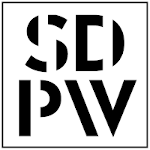Wykaz obszarów badawczych:
| Obszar badawczy | Dziedzina naukowa |
1) Different categories of radar clutter and telecommunications interferences have probability distributions, the "tails" of which can be treated in a uniform way using the extreme value theory (EVT). This theory, however, describes only the asymptotic behavior of these distributions, for the detection threshold tending to infinity. The proposed research area for the PhD student includes an attempt to find a similar uniform approach to the distribution of the tails of various interferences, but in the case of a finite value of the detection threshold, close to that used in practical conditions, i.e. an attempt to develop a new theory of "not so much" extreme values. It will require the use of an advanced probability calculus, mathematical statistics and special functions, as well as computer simulations, probably carried out on massively parallel platforms such as Graphics Processing Units. 2) The problem of the synthesis of the impedance of a passive one-port is a classic problem of circuit theory. The known solutions assume either obtaining a canonical structure with a minimum number of elements, but requiring the use of perfectly coupled inductances, or a structure without such inductances, but with the number of elements growing exponentially with the impedance order. Both approaches are not very practical. The research area proposed to the PhD student is an attempt to find a transformer-less structure with a significantly fewer elements than in existing solutions, or to prove (or verify) that such structures do not exist (which has been recently checked for low-order impedances). This very ambitious task carries a high risk, as the problem has not been solved for several decades. Therefore, the problem can be reduced to the "brute force" verification of all possible low order impedance structures, but with the order higher than this discussed to date in the literature. Possible implementation of the "brute force" method could utilize computations on a quantum computer.
|
Information and Communication Technology |
|---|
